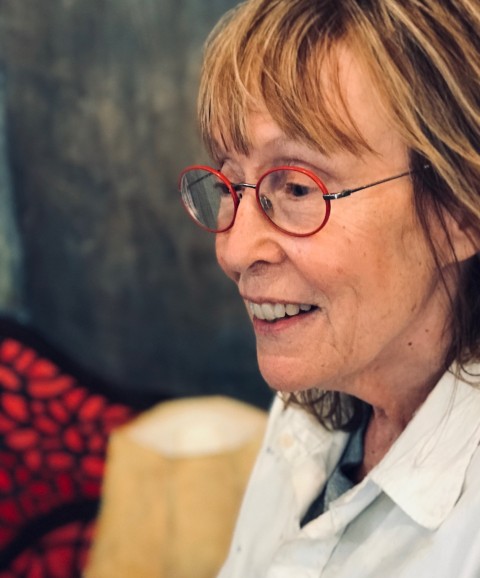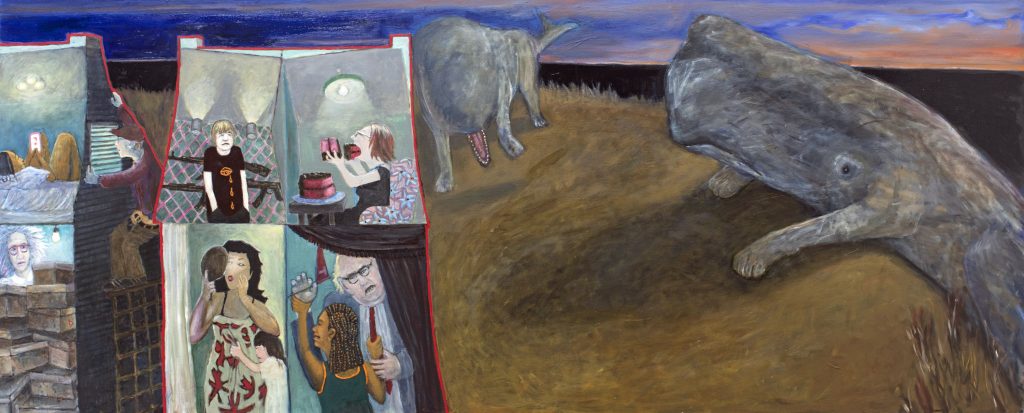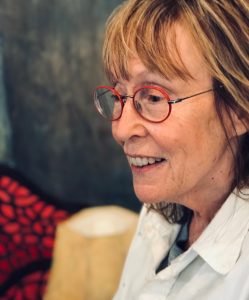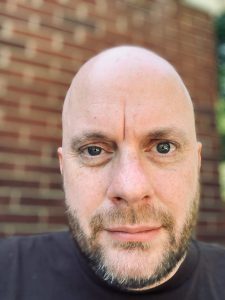
Interviewed by Paul Bilger
Who are some of your influences?
Degas. I’m not talking about the ballerinas. I’m thinking of a startlingly intimate painting (for that time) of a man trimming his wife’s toenails. “La Pedicure.” Also, “Portrait of the Bellelli family,” where a mother and two daughters stand facing the seated father. The mood is formal and tense. A story below the surface (I think).
Henry Darger is an influence—the drive to create these beautiful, playful, frightening paper doll narratives—all in secret. Again, an embrace of the personal, though shame kept it hidden until his death. Anselm Kiefer (the early, figurative work) and Neo Rauch. I generally love German painting. Frieda Kahlo, of course. Wholehearted embrace of the personal. David Lynch; he is never burdened by what others might think. I learned a lot by watching him work. Also, the importance of contrast and tension in composition. Giotto and Hieronymus Bosch. Again, the personal perception. And many more.
I noticed that you reject the word, “surrealism,” in your artist statement. Why do you reject that label? Can you tell us more about what you mean by “extreme realism”?
Surrealism has come to mean reality made weird. People think of surrealism as imagery from dreams or drugs or some deep unconscious or altered consciousness. My paintings are my lived, conscious, experience—even though they may not present actual or factual situations. The image feels true in the sense that I “recognize” it. Yes, that’s what I mean.
Buildings and desks and spoons and shoes and people buying cars and jewelry and eating French fries and soup are “reality”. I love and require this kind of ordinariness in my paintings, but it does not feel like life until there is a rhinoceros or an angel or a whaledog. I’m not saying the rhinoceros and the angel and the whaledog are visible to me and not you; I’m saying that they show aspects of reality that are there, visible or not. They are not added to reality to make it weird. Without them, it is not reality.
I think a more accurate way of describing my work (as opposed to surrealistic) is “personal.” The wholehearted embrace of personal perception.

How do you experience the reality of a whaledog?
Whaledogs (or whatever a particular painting calls for) make visible something present but otherwise not visible. It’s a feeling.
It reminds me of being on a hike in the local woods. I felt like I was being watched, and then I came across the form of a little man in the moss. It was just random moss, but it gelled the experience for me. In other words, there are feelings of presence that don’t reduce to the everyday things we can point to as part of our so-called ‘reality,” is that it?
It’s not so much about experiencing a thing that is invisible. It’s that the painting isn’t right or true or complete until the Whaledogs are there.
So it’s a matter of following the singular logic of the painting?
I guess you could say that.
But I think of it as an understanding or perspective that is present but invisible —— until its incarnation to Whaledogs.
Is there a painting that posed a particular challenge for you? What did you learn about yourself in the process of overcoming that challenge?
“When the whaledogs come back” was originally a completely different painting; it was going to be about Genesis 15 where Abraham asks God: “How do I know I can trust you?” God responds like a pragmatic businessman and says: “Go get a heifer, a ram, a goat, a dove, and a pigeon. Cut them in half lengthwise and when you and I walk together between the lined-up halves, that will be our blood covenant.” Abraham slaughters and lays out the animal parts according to God’s instructions. But when God is ready to walk, Abraham is deep asleep. So God—in the form of a “blazing torch and a smoking firepot” — establishes the covenant by walking alone between the “pieces”.
My plan was to place this in a 1950s kitchen, with Abraham’s wife, Sarai, mopping up the blood and Abraham asleep in front of a TV.
I had a wood panel made especially for this painting, 28” x 70”. I started work on it, but had not gone far when I realized I was way past being excited about this idea.
I knew too much about what the painting would end up being. I need to have enough curiosity from not knowing where I’m going to stay excited and energized throughout the process—especially on such a big painting.
When I wiped off imagery I had roughed in, I noticed, in the smeared paint, a shape on the right that resembled bluffs above the ocean near our house. So from then on, those were bluffs.
To the left, I painted houses like the ones on the street in Philadelphia where I grew up. Childhood memories always carry a charge. I wanted the houses to be populated, so I painted out the stone walls, doors, and windows, and created rooms for people to live in. What would the people be doing in their houses? Things they didn’t want their neighbors to see. So: the seven deadly sins.
I wanted the earliest forms of life to be emerging from the sea. I did some research and found some micro-organisms that qualified— unfamiliar and delicate and beautiful. I was going to draw them in with oil crayon; micro-organisms—but bigger— rising out of the sea and floating over the houses.
But micro-organisms did not create the right feeling. They looked both creepy and frivolous. Worse yet, they flattened out the painting, and even worse yet, with all the complexity of the sinners in their houses, the micro-organisms duplicated that complexity. I needed simplicity and space off to the right.
It might have been that same day that I heard Terry Gross interview a marine biologist who declared that at one time whales had walked on land. That was all I needed to hear.
I roughed in the Whaledogs and I had that feeling of recognition, this is right.
Thank you for taking the time to answer my questions!
You are welcome, Paul. Answering questions about one’s painting is part of being an artist. Declining to answer is one (perfectly legitimate) response. But in this case I found the thought and writing process enlightening. Thanks for asking.
_____________________________________
 Peggy Reavey‘s paintings tell old stories from crooked angles–often from inside a story looking out at a world that did not exist when it was first told. She paints new stories that evolve as she paints them, and intends for them to continue to develop after she finishes with them. Her work strives for a realism beyond simple visibility. Thematically influenced by sources as diverse as Darwin, Anne Frank, and scripture, her work engages hidden aspects of the past and future on both personal and universal levels. Her work has been featured in individual and group exhibitions across California and internationally.
Peggy Reavey‘s paintings tell old stories from crooked angles–often from inside a story looking out at a world that did not exist when it was first told. She paints new stories that evolve as she paints them, and intends for them to continue to develop after she finishes with them. Her work strives for a realism beyond simple visibility. Thematically influenced by sources as diverse as Darwin, Anne Frank, and scripture, her work engages hidden aspects of the past and future on both personal and universal levels. Her work has been featured in individual and group exhibitions across California and internationally.
 Paul Bilger’s photography has appeared at Qarrtsiluni, Brevity, and Kompresja. His work has also been featured on music releases by Dead Voices on Air and Autistici. When not taking pictures, he is a lecturer in philosophy and film theory at Chatham University. He is the art director at SmokeLong Quarterly.
Paul Bilger’s photography has appeared at Qarrtsiluni, Brevity, and Kompresja. His work has also been featured on music releases by Dead Voices on Air and Autistici. When not taking pictures, he is a lecturer in philosophy and film theory at Chatham University. He is the art director at SmokeLong Quarterly.

 The core workshop of SmokeLong Fitness is all in writing, so you can take part from anywhere at anytime. We are excited about creating a supportive, consistent and structured environment for flash writers to work on their craft in a community. We are thrilled and proud to say that our workshop participants have won, placed, or been listed in every major flash competition. Community works.
The core workshop of SmokeLong Fitness is all in writing, so you can take part from anywhere at anytime. We are excited about creating a supportive, consistent and structured environment for flash writers to work on their craft in a community. We are thrilled and proud to say that our workshop participants have won, placed, or been listed in every major flash competition. Community works.